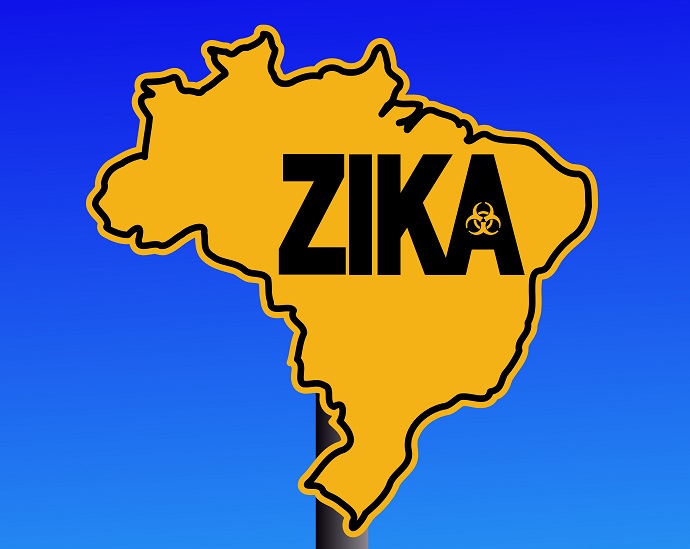Abstract:
Zika virus fever is spreading in Latin America and has put the local and national health authorities, as well as the general population, on high alert. The World Health Organization has designated Zika virus a ‘Public Health Emergency of International Concern’, which has mobilized the scientific community to coordinate efforts in order to fast track the development of a vaccine, treatments, preventive measures and diagnostic tools to combat the spread of the virus. Of particular concern is the correlation between Zika and two neurological conditions, Guillain-Barré syndrome and microcephaly in newborns. Public health education and preventive measures will play a key role in preventing, controlling and eradicating this infectious disease.
Main Article:
What is Zika?
Zika virus fever is an acute disease in the arbovirus family, first discovered in primates in the Zika Forest of Uganda in 1947. Zika in Brazil was first diagnosed in 2015; authorities expect 1.5 million Brazilians will be infected in 2016.
Transmission
The Zika virus (ZIKV) is primarily transmitted by mosquito bites, specifically from the female of the Aedes aegypti species. Transmission has also been reported or suspected through the following methods:
- From a mother infected with ZIKV to her fetus during pregnancy
- Through blood transfusion where the donor in infected with ZIKV
- Through sexual contact with a ZIKV infected person
Symptoms
Although not everyone infected with ZIKV will exhibit symptoms, those that do will experience joint pain, low-grade fever (37-38 ºC), headache, itchy rough skin, conjunctivitis, fatigue, cutaneous rash and gastrointestinal disorders. The symptoms will disappear within 2-7 days. In diagnosing Zika virus infection, it is important to run differential diagnostics through PCR assays for dengue, Zika, chikungunya and mononucleosis, all of which are either transmitted through the same mosquito and/or have similar symptoms.
Treatment
There is currently no cure for Zika. Treatment is for the symptoms and includes rest, hydration, and antipyretics that do not cause bleeding, like paracetamol (acetaminophen). A vaccine is in development, but not yet available. Anyone suspected of having Zika virus fever is advised to seek diagnosis from their local health unit to ensure a proper treatment strategy. This is also extremely important for national and international epidemiological notification and disease tracking purposes.
Suspected Complications
Following the declaration of Zika as Public Health Emergency of International Concern researchers across the world have stepped up their efforts in defining the apparent link between the Zika virus and both microcephaly in newborns and Guillain-Barré syndrome.
Public Health Initiatives
Local and national public health initiatives will play a major role in educating the public on prevention strategies to control the spread of Zika in affected regions. Initiatives should include:
- Public health campaigns playing on TV and radio stations, as well as on NGO websites;
- Dissemination of personal care and prevention measures, as well as general disease information, using pamphlets, newspapers and magazines;
- Establishment of a dedicated call centre and free information channels to improve patient access to information and treatment;
- Empowerment of community health agents and police to control the mosquito population through home visits to detect and eliminate or treat standing water in old tires, refrigerators, untreated pools, water tanks, empty lots and abandoned sites;
- Educating the general public on the importance of recycling plastic bags, bottles, bottle caps, etc as an alternative to waste disposal to prevent them from becoming breeding grounds for mosquitoes due to accumulation of standing water in the environment;
- Surveillance and control of sea ports, shipping containers, and ships to ensure infected mosquitoes are not carried to other countries;
- Efforts to restore environmental flora and fauna that has been damaged through human action, to restore the natural food chain, including frogs and other small reptiles that control the mosquito population;
- Ensuring unrestricted access to medical care for pregnant women; and
- The distribution of free mosquito repellent for personal use. The strategy of environmental repellents on a large scale are not recommended anymore, as the practice can harm local birds and other animals.
In countries like Brazil, local health officials are working with the local communities to identify prime breeding grounds for the Aedes mosquitoes. Citizens are being encouraged to report all instances of standing water that may act as a reservoir for the Zika virus.
As scientists race to find a viable vaccine or treatment for Zika virus, local and national efforts to provide education, control the transmission of the disease and prevent breeding of the vector mosquito will offer the best protection for the citizens of hard-hit countries like Brazil.
References:
Hamel R, Dejarnac O, Wichit S, Ekchariyawat P, Neyret A, Luplertlop N, Perera-Lecoin M, Surasombatpattana P, Talignani L, Thomas F, Cao-Lormeau V-M, Choumet V, Briant L, Desprès P, Amara A, Yssel H, Missé D. (2015, June 15). Biology of Zika virus infection in human skin cells. Journal of Virology, 89(17). Accessed via: http://www.ncbi.nlm.nih.gov/pubmed/26085147
Portal Brasil ,Cience and teclology lab ,Brazil (2016). “Aedes do bem” auxilia no combate ao mosquito da dengue. Accessed via: http://www.brasil.gov.br/ciencia-e-tecnologia/2016/01/aedes-do-bem-auxilia-no-combate-ao-mosquito-da-dengue
Oo globo,Brazil, 2016. Accessed via: http://oglobo.globo.com/brasil/microcefalia-medica-critica-falta-de-testes-assistencia-maes-18557133
Vasconcelos, Pedro (2015). Zika Virus Disease: It is a new emerging problem in the Americas? Rev Pan-Amaz Saude v.6 n.2 Ananindeua June 2015. Accessed via: http://scielo.iec.pa.gov.br/scielo.php?pid=S217662232015000200001&script=sci_arttext
World Health Organization (2016 ). Zika virus disease: Questions and Answers. Accessed via: http://who.int/features/qa/zika/en/












